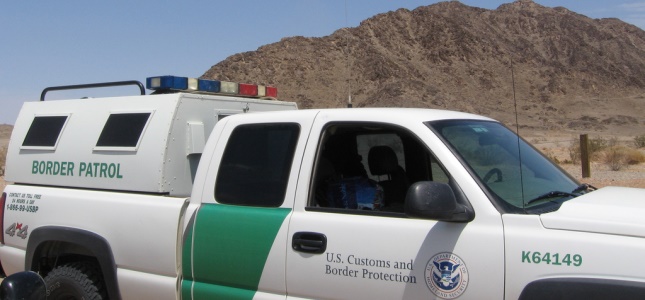 The endemic use of force within U.S. Customs and Border Protection (CBP) made national headlines in 2010 when Anastacio Hernandez Rojas, a 42-year old Mexican national living in San Diego, was killed by a Border Patrol Officer while in CBP custody. Since then, at least 18 other people have have died as the result of alleged excessive use of force by CBP officials, including six U.S. citizens and seven minors under 21. These incidents prompted the Department of Homeland Security (DHS) to review the use of force at CBP. A report issued earlier this month by DHS’s Office of Inspector General (OIG) exposes the inadequacies of the “use of force training” for Border Patrol agents and a series of operational flaws in the agency’s monitoring of employee misconduct.
The endemic use of force within U.S. Customs and Border Protection (CBP) made national headlines in 2010 when Anastacio Hernandez Rojas, a 42-year old Mexican national living in San Diego, was killed by a Border Patrol Officer while in CBP custody. Since then, at least 18 other people have have died as the result of alleged excessive use of force by CBP officials, including six U.S. citizens and seven minors under 21. These incidents prompted the Department of Homeland Security (DHS) to review the use of force at CBP. A report issued earlier this month by DHS’s Office of Inspector General (OIG) exposes the inadequacies of the “use of force training” for Border Patrol agents and a series of operational flaws in the agency’s monitoring of employee misconduct.
Today, in line with the OIG report, CBP announced several reforms to its use of force training and monitoring programs. Drawing on recommendations from the OIG and a collection of ninety undisclosed recommendations from an internal review and an external, independent evaluation, CBP says it is taking steps to: better understand trends and improve use of force policy, training, tactics, and equipment; identify alternative weapons and equipment that will help officers de-escalate confrontations; enhance current training; and establish a framework for stakeholder engagement. These are welcome initiatives.
In its report, the OIG revealed shortcomings in CBP’s training programs about use of force. While CBP provides mandatory firearms training and instruction on using “less-lethal” force (such as batons and Taser guns), some CBP training facilities cut corners in their training exercises and fail to meet agency standards. A field audit conducted by the Use of Force Policy Division (UFPD) observed that “many agents and officers do not understand use of force and the extent to which they may or may not use force.” The OIG recommended that CBP work closely with field audit teams in order to address inadequacies in CBP training programs. Agreeing with this suggestion, CBP is working to expand the field audit program to determine what deficiencies exist in use of force training.
In addition, the OIG found that Border Patrol agents are “not fully prepared for possible real-life situations they might encounter”—a concern raised by several CBP officials. As explained in the report, the agency has not incorporated situational training exercises into its training program. To address this flaw, CBP announced plans to build a mock international border fence training area at CBP training centers. Previous attempts to incorporate situational training have been delayed due to “budget constraints.” In today’s announcement, CBP affirmed its commitment to building the mock border fence and to enhancing and increasing its scenario-based training.
In addition to flaws in CBP’s use of force training, the OIG discovered that CBP fails to maintain comprehensive records regarding excessive use of force by its agents. While allegations of employee abuse are tracked in a DHS case management system, the database does not have a category to identify cases involving the use of force. As a result, the OIG was “unable to determine the total number of excessive force allegations and investigations involving CBP employees.” Although CBP has yet to explain whether and how it will remedy this problem, the agency, does require officers to self-report all instances of use of force, and in today’s announcement, the agency said that it is making changes to its tracking system that will help “provide clearer operational awareness for CBP management.”
One possible oversight mechanism that the OIG did not consider in its report is the use of body-worn cameras. Some advocacy groups, including the American Civil Liberties Union, promote the use of body-worn cameras as a way to discourage unnecessary or excessive use of force, deter violence against officers, and protect officers from unfounded allegations of misconduct. Following police departments across the country, CBP announced that its new initiatives will include a pilot program to incorporate the use of video on CBP vehicles, agents, and officers. CBP should move quickly to launch this pilot.
At a time where many in Congress are sponsoring and supporting bills that would direct billions of dollars to the border in the form of additional Border Patrol officers and military technology, it is crucial that there be more focus on implementing safeguards to avoid instances of unnecessary use of force and to end other abuses. CBP’s increased training, monitoring, and oversight are important first steps.
Photo Courtesy of Sandra Cuffe.
FILED UNDER: Customs and Border Protection, Department of Homeland Security, Executive Branch, undocumented immigration


